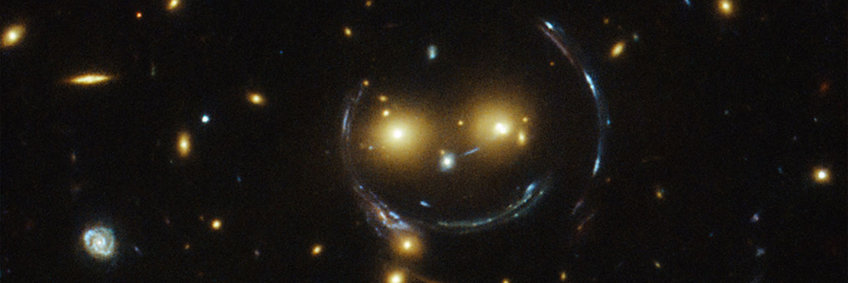
With Einstein on crooked paths
How can gravitational waves deflected by lensing effects be found? Machine learning methods will be used to investigate whether the expected diffraction effects can actually be found in the data from gravitational wave detectors. This could be far more than just another spectacular confirmation of Einstein's theory, but a new method for exploring the universe.
An object behind a glass of water appears distorted because the water deflects the incident rays of light. Such a "lens effect" is also caused by gravitational fields: light moving through the universe is deflected, sometimes creating multiple images of the same object. This gravitational lensing effect was predicted by Einstein and has since become an important tool in astrophysics. Gravitational lensing has numerous applications, e.g. in the search for extrasolar planets, the interpretation of images of supermassive black holes or the mapping of the distribution of dark matter.
Gravitational waves: Shaking space and time
Like light, gravitational waves are also deflected and sometimes split into several signals. Einstein predicted these ripples in space-time, which propagate at the speed of light, as early as 1916. In 2015, the first gravitational wave, emitted when two black holes collided in the distant universe, was measured directly. This collective achievement, to which the Max Planck Institute for Gravitational Physics made important contributions, was honored with the Nobel Prize in Physics in 2017. Since then, the emerging field of gravitational wave astronomy has observed 90 confirmed signals and more than 80 significant candidates in the ongoing observational campaign. Machine learning will allow a faster analysis of the rapidly growing data.
Can gravitational waves deflected by lensing effects be found? Miguel Zumalacarregui and his team at the Max Planck Institute for Gravitational Physics have already developed a theory for deflecting gravitational waves and efficient software for calculating these effects. The code delivers precise predictions of complex lens systems in milliseconds.
Research group leader Zumalacarregui used machine learning methods to investigate whether the expected diffraction effects can actually be found in the data from the gravitational wave detectors. The detection of gravitational deflection or its absence not only provides new insights into gravitational wave astronomy, but also has profound implications for other areas of astrophysics and fundamental physics, such as the study of the properties of dark matter. Gravitationally deflected gravitational waves could thus be far more than just another spectacular confirmation of Einstein's theory, namely a new method for exploring the universe.